Book Value Per Share BVPS Formula + Calculator
Hence, its market capitalisation is Rs.6.2 lakh (62 x 10000) and its shareholder’s equity or net value of assets is Rs.6 lakh (1500,000 – 900,000). However, investors should note that finding BVPS in isolation cannot produce promising analysis. It can be used in conjunction with other metrics like Discounted Cash Flow (DCF) and Price-to-earnings ratio (PE) to reach a somewhat concrete view of an organisation’s potential. There is a difference between outstanding and issued shares, but some companies might call outstanding common shares « issued » shares in their reports.
If it’s obvious that a company is trading for less than its book value, you have to ask yourself why other investors haven’t noticed and pushed the price back to book value or even higher. The P/B ratio is an easy calculation, and it’s published in the stock summaries on any major stock research website. Despite the increase in share price (and market capitalization), the book value of equity per share remained unchanged. If we assume the company has preferred equity of $3mm and a weighted average share count of 4mm, the BVPS is $3.00 (calculated as $15mm less $3mm, divided by 4mm shares).
However, tech companies that specialize in creating software don’t have an asset that is stored somewhere, and they don’t require expensive industrial equipment to produce their product. They may generate sales with that software, but there isn’t a warehouse full of software code that investors can look at to gauge future sales. However, if this builds brand value and the company is able to charge premium prices for its products, its stock price might rise far above its BVPS. Common stocks from its shareholders, the company can increase the book value per share from Rs. 8 to Rs. 10.
- So, if a company had $21 million in shareholders’ equity and two million outstanding common shares, its book value per share would be $10.50.
- A company’s stock buybacks decrease the book value and total common share count.
- BVPS does not focus on other factors, like the company’s growth potential in the future or market conditions, and thus, should not be used alone in analyzing the company’s shares’ value.
- If, for example, the company generates $500,000 in earnings and uses $200,000 of the profits to buy assets, common equity increases along with BVPS.
It also accounts for the paid-in capital and the value of all the common shares. This figure represents the amount that is available after accounting for all the liabilities and assets of a company – the pay-out that the shareholders are entitled to receive. Applying logic, dividing the total pay-out with the total number of shareholders invested in the company gives the value of each share. The book value per share (BVPS) metric can be used by investors to gauge whether a stock price is undervalued by comparing it to the firm’s market value per share. If a company’s BVPS is higher than its market value per share—its current stock price—then the stock is considered undervalued. If the firm’s BVPS increases, the stock should be perceived as more valuable, and the stock price should increase.
Also, since you’re working with common shares, you must subtract the preferred shareholder equity from the total equity. Book value per share is an important metric that investors use to evaluate the value of stocks. A stock is considered undervalued if the book value per share is more than the price at which it trades in the market. The book value of a company represents the net asset value (total assets – total liabilities) of a company. Mathematically, it is the sum of all the tangible assets, i.e., equipment and property owned by the company, cash holdings, inventory on hand minus all liabilities.
For the purpose of disclosure, companies break these three elements into more refined figures for investors to examine. Investors can calculate valuation ratios from these to make it easier to compare companies. Among these, the book value and the price-to-book ratio (P/B ratio) are staples for value investors. Value investors prefer using the BVPS as a gauge of a stock’s potential value when future growth and earnings projections are less stable. Because book value per share only considers the book value, it fails to incorporate other intangible factors that may increase the market value of a company’s shares, even upon liquidation. For instance, banks or high-tech software companies often have very little tangible assets relative to their intellectual property and human capital (labor force).
How do companies increase the book value per share?
It depends on a number of factors, such as the company’s financial statements, competitive landscape, and management team. Even if a company has a high intuit privacy policy, there’s no guarantee that it will be a successful investment. This is why it’s so important to do a lot of research before making any investment decisions. That said, looking deeper into book value will give you a better understanding of the company.
Similarly, if the company uses $200,000 of the generated revenues to pay up debts and reduce liabilities, it will also increase the equity available to common stockholders. Shareholders’ equity is the owners’ residual claim in the company after debts have been paid. It is equal to a firm’s total assets minus its total liabilities, which is the net asset value or book value of the company as a whole. While this can be a good starting point for new investors to look for undervalued stocks in the market, these interpretations may not necessarily make the stock a good investment option. This may only indicate whether a stock is undervalued or overvalued and must be seen in combination with other factors like the company’s earnings record. The price per book value is a way of measuring the value offered by a firm’s shares.
Stock trading vs trading in Forex
However, its value lies in the fact that investors use it to gauge whether a stock price is undervalued by comparing it to the firm’s market value per share. If a company’s BVPS is higher than its market value per share, which is its current stock price, then the stock is considered undervalued. The market value per share is a company’s current stock price, and it reflects a value that market participants are willing to pay for its common share. The book value per share is calculated using historical costs, but the market value per share is a forward-looking metric that takes into account a company’s earning power in the future. With increases in a company’s estimated profitability, expected growth, and safety of its business, the market value per share grows higher.
Difference Between Book Value Per Share and Market Value Per Share
Outstanding shares consist of all the company’s stock currently held by all its shareholders. That includes share blocks held by institutional investors and restricted shares. While this figure is an indicator of the intrinsic value of the shares of a company, there are certain drawbacks to relying too much on this number. The first factor is that it doesn’t account for the intangible assets that the company deals in. If there is a certain sum from equity invested in the market by a company and a loss is incurred, the https://intuit-payroll.org/ may not reflect it effectively.
He currently researches and teaches economic sociology and the social studies of finance at the Hebrew University in Jerusalem. The answer is yes because the company can be punished/pushed unfairly by the market due to stated book value that may not represent the actual value of its assets. It may be a value trap rather than a value opportunity as companies’ assets can be treated differently in different industries. Market value is the worth of a company based on the perceived worth by the market.
In short, this is the minimum amount that shareholders will receive for investing in the company. Be sure to look at a company’s financial statements, stock price, and other factors before making any investment decisions. The book value per share is calculated by subtracting the preferred stock from the stockholders’ total equity (book value) and dividing that by the average number of outstanding shares. Let’s say that Company A has $12 million in stockholders’ equity, $2 million of preferred stock, and an average of 2,500,000 shares outstanding. You can use the book value per share formula to help calculate the book value per share of the company.
All other things being equal, a higher book value is better, but it is essential to consider several other factors. People who have already invested in a successful company can realistically expect its book valuation to increase during most years. However, larger companies within a particular industry will generally have higher book values, just as they have higher market values. Consider technology giant Microsoft Corp.’s (MSFT) balance sheet for the fiscal year ending June 2020.
The answer could be that the market is unfairly battering the company, but it’s equally probable that the stated book value does not represent the real value of the assets. Companies account for their assets in different ways in different industries, and sometimes even within the same industry. Failing bankruptcy, other investors would ideally see that the book value was worth more than the stock and also buy in, pushing the price up to match the book value. For example, if a company has a total asset balance of $40mm and liabilities of $25mm, then the book value of equity is $15mm. As suggested by the name, the “book” value per share calculation begins with finding the necessary balance sheet data from the latest financial report (e.g. 10-K, 10-Q). Comparing BVPS to the market price of a stock is known as the market-to-book ratio, or the price-to-book ratio.




